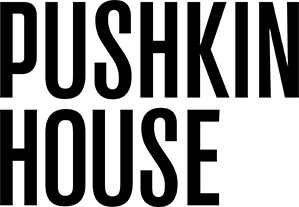John Peter Askew, Young Man Paddling in Stream 2008
with an essay by Elena Zaytseva
A young man walks across a stream, his almost-naked body is athletic and well-proportioned; the waters are clear and apparently very cold as the man is shivering. The bright sunshine lights him from behind with stark contrast, outlining the classical shapes of his body. The stream is foreshortened — it flows straight towards us, like in Italian Quattrocento composition of Baptism. The landscape behind the man, with its gently pointed hills partly covered with forestation, is reminiscent of ones by Piero della Francesca. The skies are idyllic and blue, the man is light-hearted, but the whole picture is so different from the classical paintings it is reminiscent of. The man’s head is tilted down and his posture is unstable, the forestation around him is uncultured, shaggy and unkempt. The whole picture is casual, just one moment in the life of someone we know nothing about.
The photo was taken in the wilderness near the Russian city of Perm, which is at the eastern end of Europe, near the Ural Mountains. The man in the photograph is apparently having a day out, accompanied by the others, whom we don’t see but whom he acknowledges by his posture. And he is apparently having fun with his friends, invisible to us.
I was told that people in Perm spend a lot of time outdoors, hiking, rafting, skiing — this is what they usually do in their free time. Outdoor adventures for them are like Saturday afternoon art gallery visits for us. However, to delineate between “them” and “us” goes against the spirit of the art. ‘We’, by artist John Peter Askew, doesn’t divide the people of Europe between West and East.
Calling people of different cultures as “us” is an attitude that is more important than ever today, at a time of global emergency, when the established economical and social models are stumbling and not working anymore. We are facing profound changes in ways we live, work and relate to each other. And we will be eating, dressing up and having free time differently than we did before these days in March 2020, when we all had to lock ourselves in.
‘We’ shows us examples of a full and content life happening outside of the consumerist bubble of capitalism. The protagonists of ‘We’ are not spending or consuming when having time out, nor when they prepare meals for their families and friends, or educate their kids. They are not striving for different life that shown to them by some Western photographers, they are having they own ones.
And yet, this kind of life is part of European culture. It is clear that the photo is made by an artist whose eyes were trained by classical models of the old European culture, with its values of enlightenment, order and perspective. The posture of the man in the photograph reminds the viewer of the harmony and balance of Discobolus of Myron or a Christ of the Italian fifteenth century. At the same time, the difference between the real man having fun in the woods at the Eastern edge of Europe and his classical protagonist is like the difference between liberty and freedom: one is cultured and legislated and the other has just always been there.
Elena Zaytseva
Elena Zaytseva is the curator of Pushkin House’s exhibition, ‘We. Photographs from Russia 1996-2017’ by John Peter Askew.

